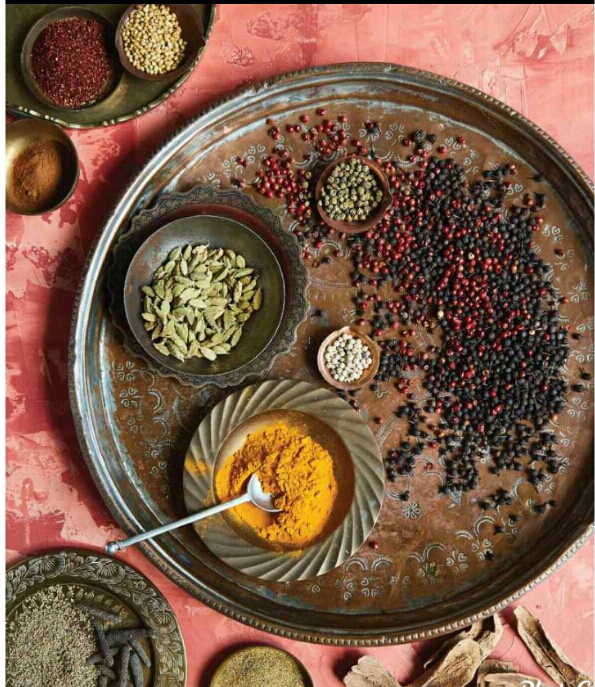Surprising Health Benefits You Don’t Know About These Spices

If you want to spice up your life, add some root, bark and plant derivatives to your diet. Herbs and spices add some pep to any meal, and many come with proven heart healthy benefits and can even ease pain, including post-workout soreness. Herbs and spices also have antibacterial and antiviral properties, and most are high in B-vitamins and trace minerals. In fact, most contain more disease-fighting antioxidants than some fruits and vegetables. Herbs and spices are also an inexpensive way to add flavor to food without the extra fat, calories, sodium or cholesterol.
Incorporating herbs and spices into the diet has immeasurable benefits, according to Len Glassman, a certified health nutritionist, trainer and owner of the Personal Best Training Center, but unfortunately most are never used. “Most potent and healthy herbs are rarely used, mainly from lack of knowledge about them,” says Glassman, “while the least potent (salt and pepper) are the most commonly used seasonings.” Glassman breaks down the best plant-derived wonders, root by seed by bark. Spice up your diet and reap the health benefits.
 Cayenne Pepper
Cayenne Pepper
Cap food off with cayenne! The heat factor in cayenne pepper is brought on by capsaicin, a substance that makes peppers hot. Highly therapeutic, the substance helps relieve aches and soreness. It’s even an active ingredient in some over-the-counter pain relieving creams.
Other medical benefits include improved circulation, heart health and helping fight prostate cancer and ulcers. Cayenne pepper adds a spicy kick to foods like vegetables, tuna and turkey. If you can take on the hottest peppers out there, try habanero or Scotch bonnet. For those who want less of a jolt, try jalapenos, Spanish pimentos or cherry peppers.
 Ginger
Ginger
In its whole form, ginger is one gnarly looking tree root. But this underground stem is excellent for treating upset stomachs, gas and bloating, sore throats and colds in addition to other conditions, such as arthritis and motion sickness. A spicy herb that is used in both sweet and savoury dishes, ginger can be sliced, grated, sugared or eaten like candy. Ginger is staple in many baked goods and Asian dishes and can also be consumed as a tea, which can help ease an upset stomach.
 Cinnamon
Cinnamon
Cinnamon comes from the bark of a tropical evergreen tree and has one of the highest antioxidant values of any spice. The spice has been shown to reduce inflammation, lower blood sugar and blood triglyceride levels, alleviate nausea and increase sensitivity to insulin as an aid in fat burning. It’s also a good source of manganese, iron and calcium.
While cinnamon is an incredibly healthy and nutritious spice, it’s often hard to branch out from the most common uses: coffee, cookies, muffins and desserts. But there are healthier ways to reap the benefits of this magical spice: pour it over oatmeal, yoghurt or cottage cheese, stir it into peanut butter or protein shakes and sprinkle it on sweet potatoes or carrots. Cinnamon also kills bacteria, so the next time you get a cut, you can actually sprinkle the spice on the wound.
 Fennel
Fennel
Fennel dates back to the times of the Ancient Greeks. The fennel plant is considered a weed in the United States and can be found growing in abundance in fields and along the roadside in many areas of the world. Fennel is high in calcium, which is essential for the healthy growth of bones and teeth and rich in niacin, which helps to turn food into energy. Fennel is also high in vitamin C, which helps to promote a strong immune system and is an excellent source of dietary fiber and iron, which help to keep your metabolism and digestive tract running smoothly.
This peppery plant can be served raw or cooked, but the highest nutritional value comes from consuming fennel leaves raw in salads. It can also be steamed with other greens or used in stir fry and fish recipes. Fennel is also a natural appetite suppressant and can also help detoxify and exfoliate the skin.
 Turmeric
Turmeric
Turmeric is what gives common deli mustard, butters and cheeses their yellow colour. Many claim that this bright orange-yellow spice provides pain relief equal or better to over-the-counter remedies such as ibuprofen. Turmeric is also being investigated for its potential benefits for those with Alzheimer’s disease, arthritis and cancer. An incredibly powerful antioxidant, turmeric contains anti-inflammatory and anti-bacterial properties while helping to digest fats quickly.
The spice can be added in pinches to a variety of foods including meats and salads, making it easy to consume. Curries and sauces are also great bases for turmeric. For those who don’t care for the taste there are also turmeric capsules on the market.
 Oregano
Oregano
Commonly known as the great smelling stuff you shake onto your slice at the local pizza parlor, oregano has antiviral, antibacterial, anticancer, antioxidant and antibiotic properties. Its oil and leaves are used medicinally in treating cough, fever, congestion, body-ache and other illnesses. Use it as a seasoning in stews, pizzas and tomato-based sauces. Whenever possible, opt for fresh oregano leaves, which can enhance the flavor of salads and soups.
 Basil
Basil
A popular herb used to season sauces, soups, salads and pasta dishes, basil (scent leaf) is known to have exceptionally powerful antioxidant properties that can protect the body from premature aging, common skin issues and some types of cancer. The herb contains plant pigments that shield your cell structures from oxygen and radiation damage and can be applied to wounds to help prevent bacterial infections. Basil is an easy addition to any diet. Toss a few basil leaves into your favorite dish for a fresh burst of flavor or use whole leaves and tomato slices to make a flavorful salad.
Culled from: Men’s journal







